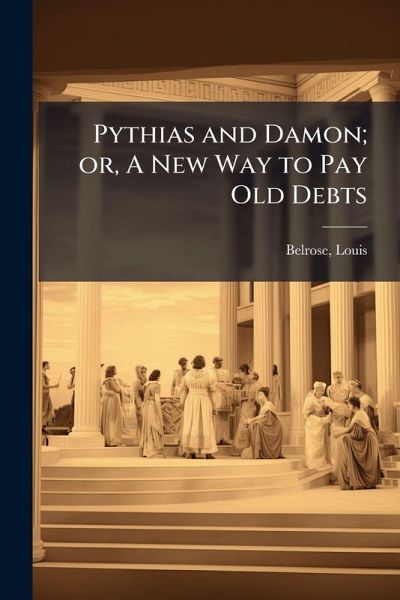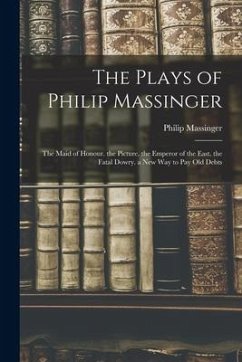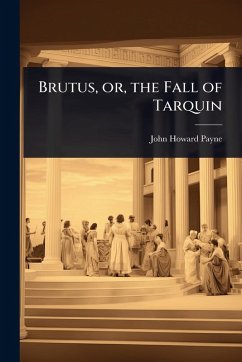
Pythias and Damon; or, A New Way to Pay Old Debts
Versandkostenfrei!
Versandfertig in über 4 Wochen
14,99 €
inkl. MwSt.

PAYBACK Punkte
7 °P sammeln!
"Pythias and Damon; or, A New Way to Pay Old Debts" is a play reflecting themes of friendship and sacrifice, rooted in classical Greek stories. This adaptation, published in 1881, explores the profound bond between Pythias and Damon and their willingness to face dire consequences for one another. The narrative revolves around the concept of assuming debts, both literal and figurative, showcasing the lengths to which true friends will go. Louis Belrose's work offers a glimpse into 19th-century interpretations of classical tales, providing a valuable look at how ancient themes resonated with con...
"Pythias and Damon; or, A New Way to Pay Old Debts" is a play reflecting themes of friendship and sacrifice, rooted in classical Greek stories. This adaptation, published in 1881, explores the profound bond between Pythias and Damon and their willingness to face dire consequences for one another. The narrative revolves around the concept of assuming debts, both literal and figurative, showcasing the lengths to which true friends will go. Louis Belrose's work offers a glimpse into 19th-century interpretations of classical tales, providing a valuable look at how ancient themes resonated with contemporary audiences. The play serves as a testament to the enduring power of friendship and the timeless nature of moral dilemmas. Ideal for students of literature, theater enthusiasts, and anyone interested in the interplay between classical and modern storytelling. This work has been selected by scholars as being culturally important, and is part of the knowledge base of civilization as we know it. This work was reproduced from the original artifact, and remains as true to the original work as possible. Therefore, you will see the original copyright references, library stamps (as most of these works have been housed in our most important libraries around the world), and other notations in the work. This work is in the public domain in the United States of America, and possibly other nations. Within the United States, you may freely copy and distribute this work, as no entity (individual or corporate) has a copyright on the body of the work. As a reproduction of a historical artifact, this work may contain missing or blurred pages, poor pictures, errant marks, etc. Scholars believe, and we concur, that this work is important enough to be preserved, reproduced, and made generally available to the public. We appreciate your support of the preservation process, and thank you for being an important part of keeping this knowledge alive and relevant.












